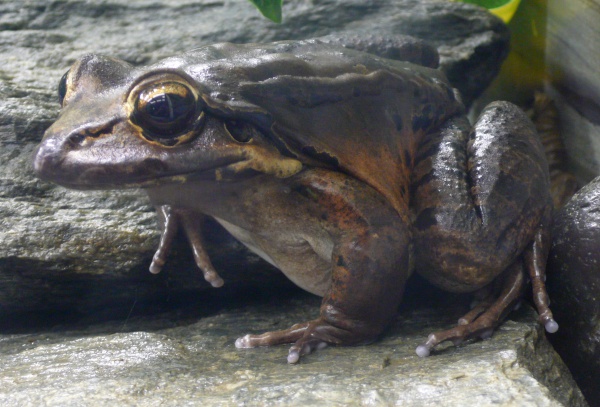Facts About Leptodactylus fallax
Leptodactylus fallax, commonly known as the mountain chicken or giant ditch frog, is a critically endangered species native to the Caribbean islands of Dominica and Montserrat. Over the years, their numbers have dramatically declined due to hunting, habitat loss, natural disasters, and more recently, the lethal fungal disease chytridiomycosis.
The mountain chicken is among the largest frogs in the world, weighing up to 1 kilogram and growing up to 22 centimeters in length. They exhibit a range of colors and possess distinctive features such as a unique fold running from the head to the groin and large, prominent eyes.
These frogs are terrestrial and nocturnal, meaning they live on land and are active at night. They are sit-and-wait predators with a diverse diet that includes insects, millipedes, spiders, and small vertebrates. During the breeding season, males compete for nesting sites and engage in amplexus—a mating embrace—with females. The female then lays eggs in a foam nest created by the male, and the tadpoles feed on specialized eggs provided by the female.
The mountain chicken faces numerous threats, including hunting, disease, habitat destruction, and introduced predators. To combat these challenges, several conservation efforts have been initiated. These include captive breeding programs in zoos, reintroduction projects in their native habitats, hunting bans, public awareness campaigns, and continuous monitoring programs.
Captive breeding programs have achieved some success, particularly in Europe, where frogs bred in captivity have been reintroduced to Montserrat. However, the species still faces significant risks, primarily due to the ongoing threat of chytridiomycosis and habitat destruction.
Efforts to save the mountain chicken are ongoing, but the road to recovery remains fraught with challenges. Nonetheless, the dedication to preserving this unique and fascinating species continues to inspire hope for its future.

 Iran
Iran